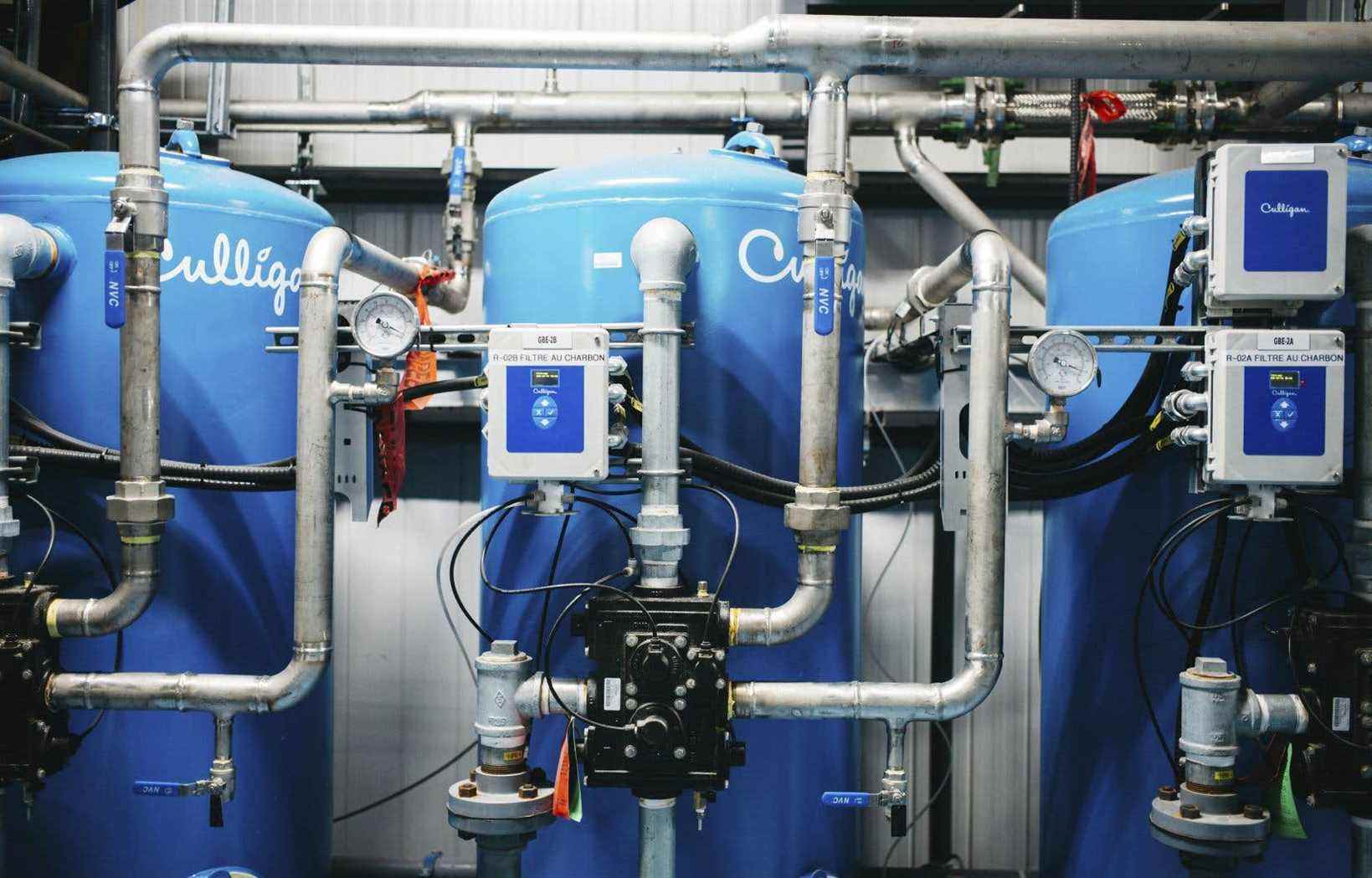A huge white sphere sits on imposing pillars. At the heart of this tank, located in the backyard of the Air Liquide facilities in Bécancour, in the Centre-du-Québec region, are up to 70 tons of a liquefied gas, colorless, odorless and tipped to play a crucial role in the energy transition: hydrogen.
The smallest atom in the Universe is everywhere and nowhere at the same time. It is constitutive of water, oil, petroleum, of our bodies. However, in its pure state, its lightness is insurmountable for the gravity of our planet, which cannot prevent it from sailing towards infinity and beyond.
In other words, to have hydrogen, it must be produced. “To make hydrogen, you need energy — and a lot of it — because you have to break a water molecule,” says Bertrand Masselot, CEO of Air Liquide Canada, pointing to large electric cables that supply the Bécancouroises facilities of the French multinational.
“Green” hydrogen, produced from renewable energy, is currently arousing worldwide enthusiasm. This clean fuel fuels the dream of a world powered by a molecule similar to fossil hydrocarbons, but carbon neutral. No new energy is the key to this plan: we are talking rather about a new “vector” for the electricity that we already have.
Currently, 90 million tons of hydrogen are produced each year in the world. However, we are not talking about green hydrogen here: the majority of this production is generated from fossil fuels undergoing a chemical transformation that releases CO2. This very affordable “grey” hydrogen, mainly used for oil refining and fertilizer production, accounts for nearly 2% of global greenhouse gas emissions.
Electrolysis 101
Green hydrogen may be in tune with the times, but the principle underlying its production – “the electrolysis of water” – has been known to scientists for centuries, recalls Pierre Bénard, director of the Hydrogen Research Institute of the University of Quebec at Trois-Rivières.
Basically, it involves immersing two electrodes in water and passing an electric current through them. At the cathode, electrons break up water molecules (H2O) and combine with protons (H+) to make hydrogen gas (H2) and OH ions–. At the anode, the OH ions– generate oxygen gas (O2), water and donate their electrons.
Conventional electrolysis processes involve adding an alkali metal, such as sodium or potassium, to water to speed up the electrochemical reaction by making more OH ions available.– in the aqueous solution. Other more recent technologies, such as proton exchange membrane (PEM) electrolysis, do not require these alkali metals.
In the immaculate Bécancour plant, large glass cubes house Air Liquide’s brand new PEM electrolysers. The latter, started at the end of 2020, now produce eight tonnes of hydrogen per day. “Even today, we have the largest PEM electrolysis capacity here in the world,” says Mr. Masselot, pointing out that other projects will soon supersede his.
Impressive plumbing supplies these machines with pure water, completely stripped of its minerals thanks to a series of filters. PEM electrolysers have several advantages over alkaline electrolysers: they are more compact, produce hydrogen without impurities, adapt easily to variations in current in the power supply and do not require any chemicals. They are, however, more expensive, in part because their electrodes contain metals such as iridium and platinum.
High energy density
Aside from the noise of the pumps running, an astonishing calm reigns in the engine room. The production, completely automated, requires very little manpower. The discrete hydrogen comes out of the electrolysers in a metal pipe which transports it to a series of refrigerators. These lower its temperature below 253°C below zero in order to liquefy it – and consume even more electricity in the process.
In all its forms, hydrogen is phenomenally light. At atmospheric pressure, it is seven times less dense than natural gas. Liquefied, it is ten times less dense than gasoline. Hydrogen is therefore bulky. However, its strength lies in its high energy density. “Per kilogram, it contains a lot of chemical energy: three times more than fossil fuels,” notes Professor Bénard.
From a safety point of view, hydrogen is not fundamentally more dangerous than fossil fuels. In the event of a leak, a smaller spark can trigger ignition, but because of its low density, the hydrogen rises very quickly towards the sky, which limits the risks. “In the case of a road accident, the hydrogen will dissipate very quickly, explains Mr. Bénard. Whereas with gasoline, the fuel stays on the ground and can fuel a fire. »
In the courtyard of the Bécancour plant, a semi-trailer truck waits while it is being filled from the large white sphere where the hydrogen stocks rest. A sort of large thermos on wheels, it can contain up to four tonnes of liquefied hydrogen. The trucks that pass through here deliver their loot to Canadian or American customers in the electronics, steel, heat treatment, chemical, mobility, etc. sectors.
The boss of Air Liquide confirms it: he has no trouble finding takers for his green hydrogen – a product considered “top of the range” for the moment – from industrial customers. “There’s a whole evolution going on,” says Mr. Masselot. Quite honestly, we didn’t see that two years ago. And as we speak, the acceleration continues. »
